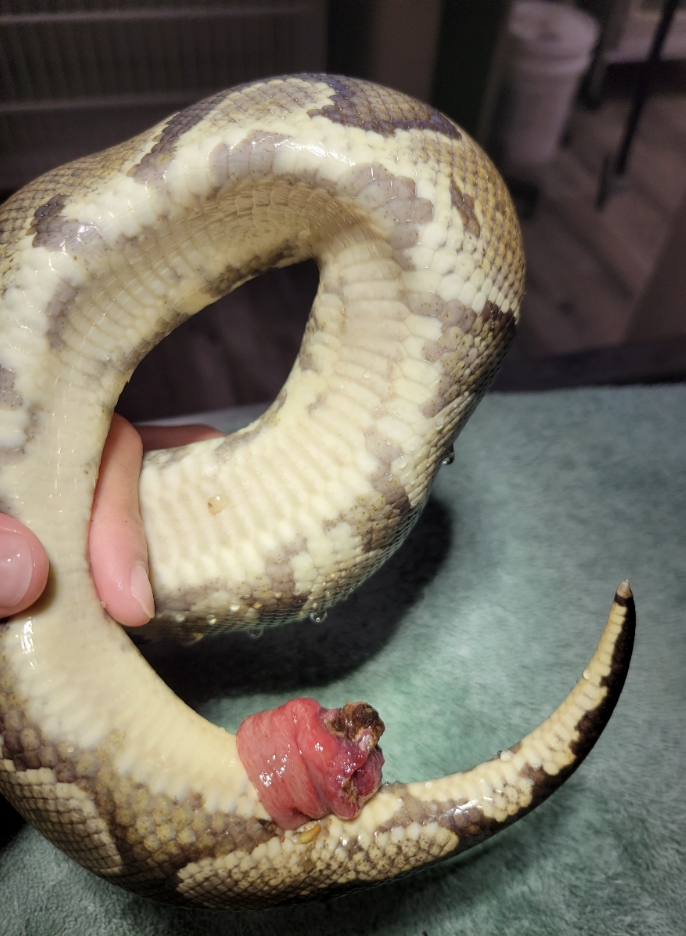Cloacal Prolapse
What is the cloaca?
In our reptile patients, there is one opening to the outside world, called the cloaca (or vent). There are three body systems that feed into the cloaca- the gastrointestinal tract (coprodeum), urinary tract (urodeum), and genital tract (proctodeum). This means that this one opening excretes products from each of these body systems (eg. fecal matter, urine).
What is a prolapse?
A prolapse is when an organ or body tissue is displaced from its normal position; usually either downward or outward. In the case of a cloacal prolapse, this means that there is tissue, which normally is positioned internally, protruding out of the cloacal opening. Since reptiles have the three body systems (mentioned above) feeding into the cloaca, it is important to identify exactly what tissue from which system is prolapsed. This tissue identification aids us in addressing why the prolapse happened in the first place.
What can cause a prolapse to occur?
What causes the prolapse depends on which body system has an issue/disease. Some common reasons include:
Gastrointestinal: enteritis/diarrhea, parasitism, obstruction/foreign body, and space-occupying masses
Urinary: bladder stones
Reproductive: dystocia “egg-bound”, hypocalcemia, sexual arousal and persistent stimulation
Should my Reptile be seen by a veterinarian for this?
Absolutely! Prolapses are often an emergency situation where the tissue can quickly dry and begin to die. The sooner a prolapse is reduced and replaced back into the cloaca, the better the chances are for your pet to successfully recover. Typically, sutures are placed to make the cloacal opening smaller to help prevent re-prolapsing of the tissue. Diagnostic testing such as fecal examination, bloodwork, and radiographs will likely also be recommended to identify what caused your reptile to prolapse. Treatment(s) will be based on the results of those tests. The goal is to identify a cause, and hopefully treat the issue so prolapsing does not happen again.
Prognosis varies greatly depending on the viability of the prolapsed tissue, amount of tissue that is prolapsed, and the underlying cause.



